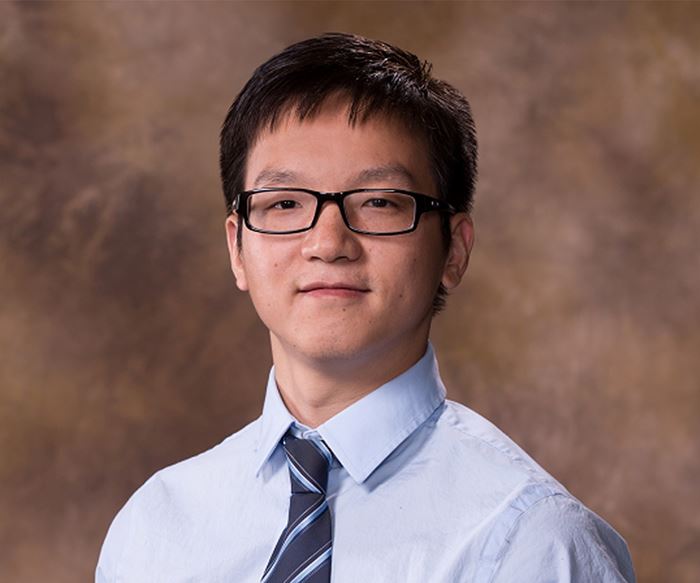Educator, Graduate Student Awarded 2019 AMUG Scholarships
The Additive Manufacturing Users Group (AMUG) gives out two different scholarships each year, the Randy Stevens Scholarship and the Guy E. Bourdeau Scholarship. The 2019 scholarship recipients have been announced.
The Additive Manufacturing Users Group (AMUG) has announced the recipients of its 2019 scholarships. Wenchao Zhou, Ph.D., assistant professor in the Department of Engineering at the University of Arkansas (U of A), has been awarded the Randy Stevens Scholarship. Victoria Sears, who is pursuing a master’s degree in bioengineering at the University of Michigan (UM), has been awarded the Guy E. Bourdeau Scholarship. With these recognitions, Dr. Zhou and Sears will engage with additive manufacturing (AM) users at the AMUG Conference, which will be held in Chicago, Illinois, from March 31 - April 4, 2019.
The scholarships were developed to recognize a passion for AM in students and educators alike. “Dr. Zhou and Ms. Sears perfectly reflect what our scholarships seek to reward,” says Brett Charlton, chair of the AMUG Scholarship Committee. “Our pool of candidates was large, and the quality of the applicants was quite high. These factors made it a challenge to select the right individuals, but I believe that both of our recipients are truly deserving of this honor.”
Dr. Wenchao Zhou has multiple roles within the Department of Mechanical Engineering at U of A. He is an assistant professor, lab director and researcher. Beyond the university, he helps K-12 students learn AM through a community-service-oriented and project-based organization called EAST Initiative.
Dr. Zhou was recruited by U of A in 2014 and in his first year at the university, he developed an AM course. He founded, and now directs, the university’s AM3 Lab, which has invented new technologies, such as Swarm 3D Printing and Assembly, Microheater Array Powder Sintering (MAPS) and high-frequency inkjet printing. Dr. Zhou is also co-founder and CTO of AMBOTS Inc., a company that is commercializing the patent-pending Swarm 3D Printing technology.
“With a decade of dedication to the field of AM, my commitment in learning, promoting and contributing to AM has never been stronger,” Dr. Zhou says. “Attending the AMUG Conference will provide me a great opportunity to communicate with a broader AM user community and gain new perspectives on the uses and applications of AM technologies.”
Victoria Sears’ research for her master’s degree is on bioink for AM. Her goal is to optimize bioprintability and study the resulting regenerative properties. Working internships in AM research and development at 3D Systems and Ford Motor Company, Sears acquired firsthand experience with several AM processes; compounded her own filaments; and developed postprocessing techniques to improve color and surface finish of power-bed fusion parts. She also became actively involved in the AM community during her internship at SME where she supported the Medical Additive Manufacturing/3D Printing Work Group.
“The scholarship will not only allow me to make strong connections with those involved in the industry, but it will also greatly expand my knowledge on the latest technologies to prepare me for a future where I will be in the forefront in actively coalescing additive manufacturing and the medical field,” Sears says.
The Randy Stevens Scholarship, founded by Randy's employer, In'Tech Industries, is awarded annually to one educator that emphasizes or focuses on additive manufacturing. The Guy E. Bourdeau Scholarship—founded by Guy's wife, Renee Bourdeau, and financially supported by Cimquest Inc.—is awarded annually to one college student.
Read Next
Profilometry-Based Indentation Plastometry (PIP) as an Alternative to Standard Tensile Testing
UK-based Plastometrex offers a benchtop testing device utilizing PIP to quickly and easily analyze the yield strength, tensile strength and uniform elongation of samples and even printed parts. The solution is particularly useful for additive manufacturing.
Read MoreAlquist 3D Looks Toward a Carbon-Sequestering Future with 3D Printed Infrastructure
The Colorado startup aims to reduce the carbon footprint of new buildings, homes and city infrastructure with robotic 3D printing and a specialized geopolymer material.
Read MorePostprocessing Steps and Costs for Metal 3D Printing
When your metal part is done 3D printing, you just pull it out of the machine and start using it, right? Not exactly.
Read More


















